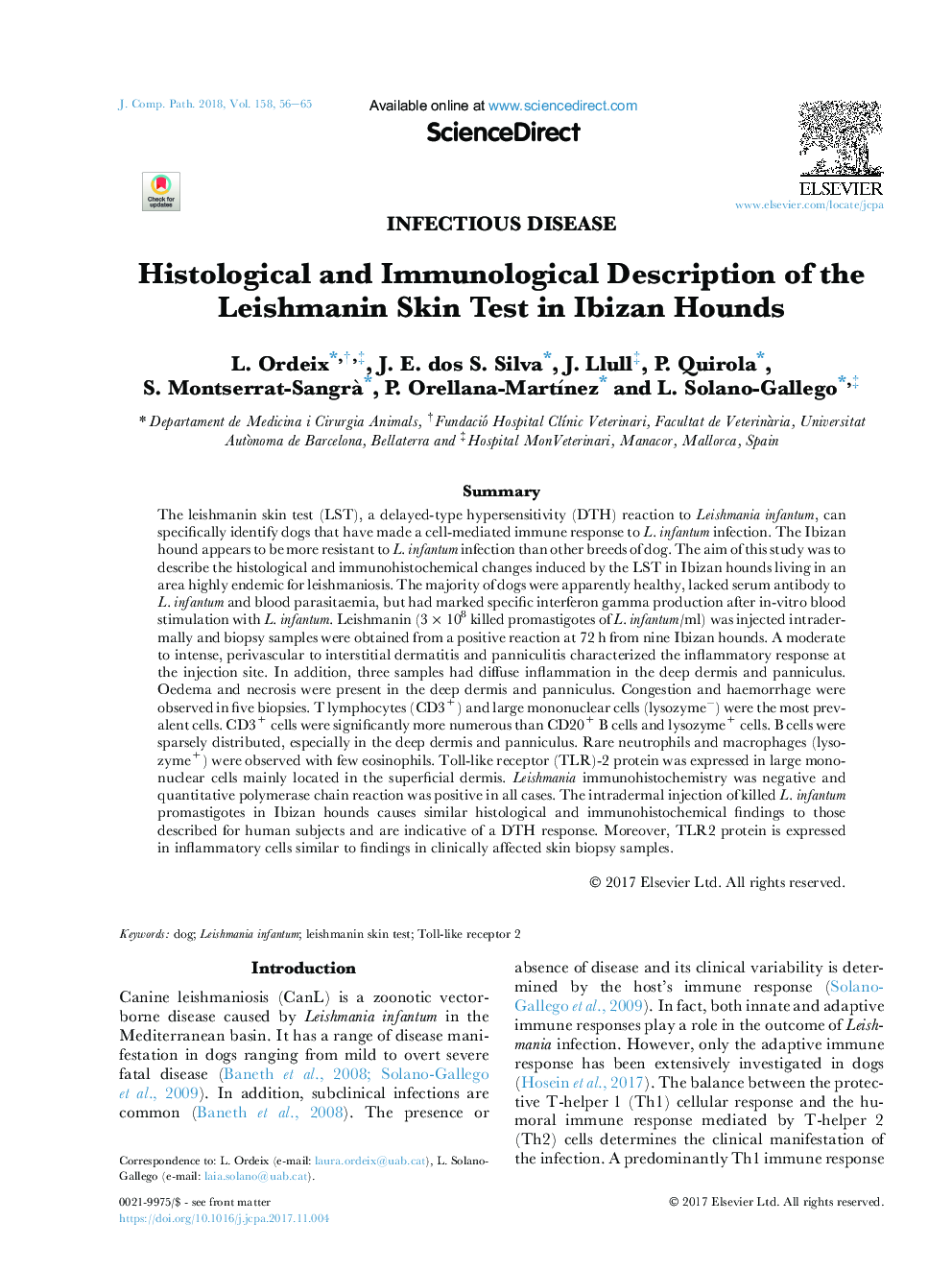| Article ID | Journal | Published Year | Pages | File Type |
|---|---|---|---|---|
| 8500451 | Journal of Comparative Pathology | 2018 | 10 Pages |
Abstract
The leishmanin skin test (LST), a delayed-type hypersensitivity (DTH) reaction to Leishmania infantum, can specifically identify dogs that have made a cell-mediated immune response to L. infantum infection. The Ibizan hound appears to be more resistant to L. infantum infection than other breeds of dog. The aim of this study was to describe the histological and immunohistochemical changes induced by the LST in Ibizan hounds living in an area highly endemic for leishmaniosis. The majority of dogs were apparently healthy, lacked serum antibody to L. infantum and blood parasitaemia, but had marked specific interferon gamma production after in-vitro blood stimulation with L. infantum. Leishmanin (3Â ÃÂ 108 killed promastigotes of L. infantum/ml) was injected intradermally and biopsy samples were obtained from a positive reaction at 72Â h from nine Ibizan hounds. A moderate to intense, perivascular to interstitial dermatitis and panniculitis characterized the inflammatory response at the injection site. In addition, three samples had diffuse inflammation in the deep dermis and panniculus. Oedema and necrosis were present in the deep dermis and panniculus. Congestion and haemorrhage were observed in five biopsies. T lymphocytes (CD3+) and large mononuclear cells (lysozymeâ) were the most prevalent cells. CD3+ cells were significantly more numerous than CD20+ B cells and lysozyme+ cells. B cells were sparsely distributed, especially in the deep dermis and panniculus. Rare neutrophils and macrophages (lysozyme+) were observed with few eosinophils. Toll-like receptor (TLR)-2 protein was expressed in large mononuclear cells mainly located in the superficial dermis. Leishmania immunohistochemistry was negative and quantitative polymerase chain reaction was positive in all cases. The intradermal injection of killed L. infantum promastigotes in Ibizan hounds causes similar histological and immunohistochemical findings to those described for human subjects and are indicative of a DTH response. Moreover, TLR2 protein is expressed in inflammatory cells similar to findings in clinically affected skin biopsy samples.
Related Topics
Life Sciences
Agricultural and Biological Sciences
Animal Science and Zoology
Authors
L. Ordeix, J.E. dos S. Silva, J. Llull, P. Quirola, S. Montserrat-Sangrà , P. MartÃnez-Orellana, L. Solano-Gallego,
